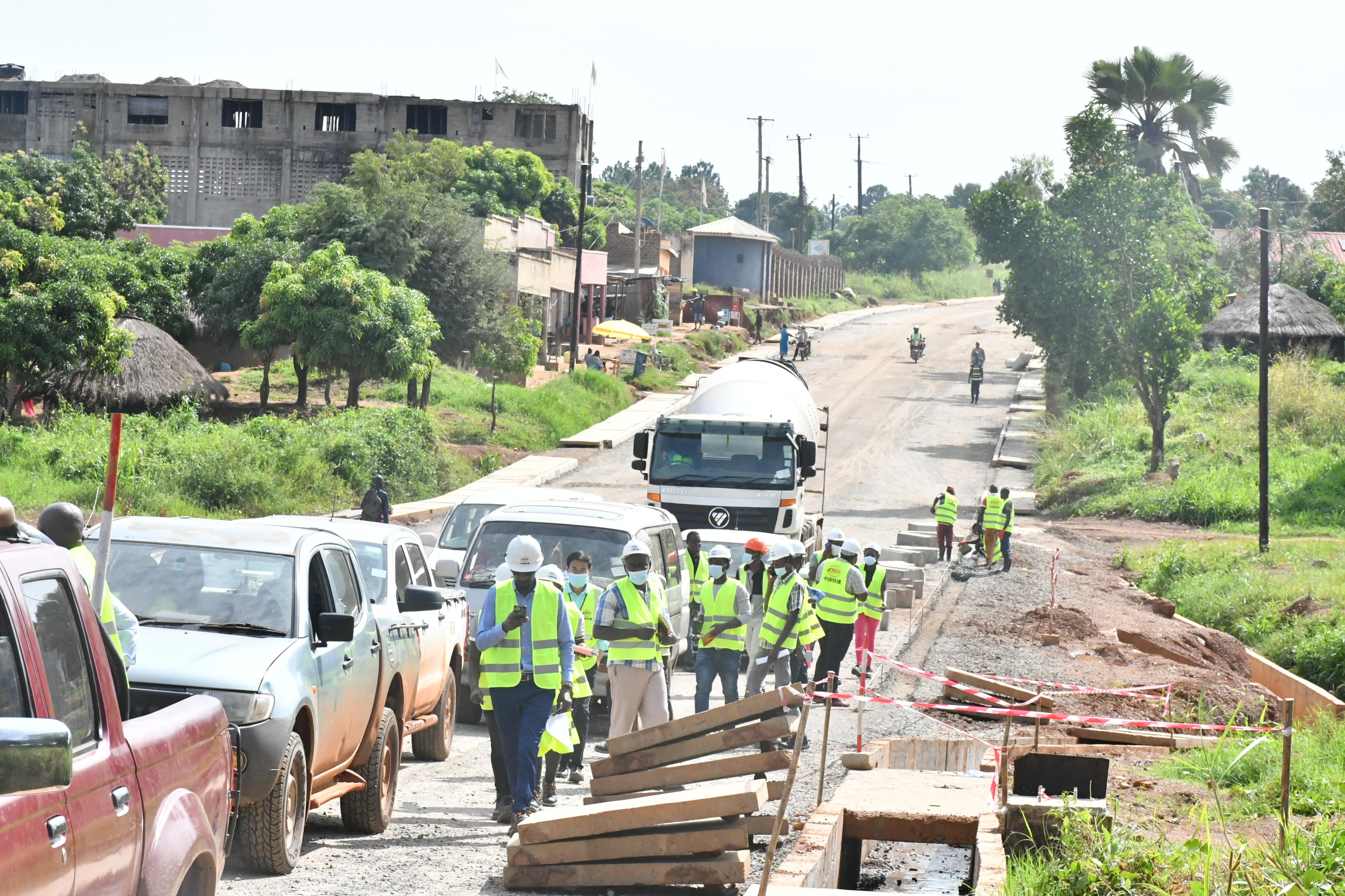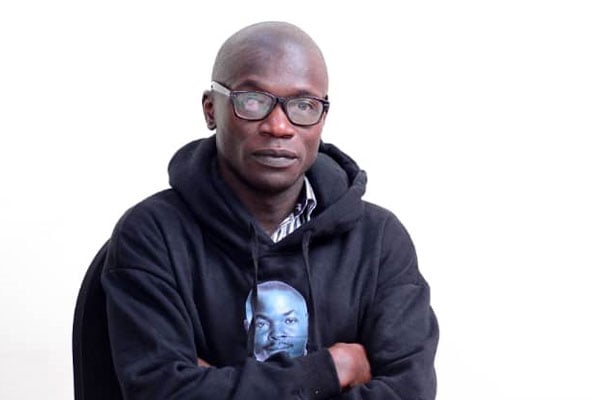Prime
Uganda plans for life without World Bank

A team from the World Bank inspects Opiyo Vincent Road in Gulu City in November last year. The road was constructed under the World Bank-funded USMID project. PHOTO | TOBBIAS JOLLY OWINY
What you need to know:
- Uganda is exploring alternative financial partnerships, including potential collaboration with China, considering issuing Eurobonds, strengthening ties with India, implementing domestic fiscal measures, and diversifying funding sources to address its financial needs.
President Museveni and Bretton Woods this week appeared to be headed farther down an irreconcilable path, with Uganda’s president since 1986, questioning the worth of loans and aid packages from his biggest development partners.
In a 26-page missive dripping with venom, Mr Museveni said budgetary support from the Bretton Woods institutions oscillated between either having “no value addition to the country or are even anti-growth.” This comes in the wake of the World Bank’s decision early this month not to greenlight new public financing to Uganda following the passing of an anti-gay legislation.
A hint was also provided as to where Uganda hopes to turn to plug the yawning chasm that the World Bank’s August 8 decision has created.
“The Chinese have helped us with Isimba, Karuma and they had offered to help with the Standard Gauge Railway. It is these areas that can quickly help to transform the economy,” Mr Museveni noted in his August 17 statement.
While the World Bank said its public financing to Uganda has over the years helped Ugandans “escape poverty, access vital services, and improve their lives”, Mr Museveni pointed out “a fundamental disequilibrium” in his August 17 missive.
“If you support the social sectors, but you do not support the railway, the electricity and the cost of borrowing, how will money-making enterprises grow?” Mr Museveni rhetorically asked, adding, “If the money-making enterprises (factories, hotels, etc.) do not grow, who will employ the school leavers? Hence, the problem of unemployed graduates.”
Not so rosy
Observers, however, say the relationship between Uganda and China has not entirely been rosy. Uganda has accused Chinese companies of poor workmanship, let alone while doing work at a snail’s pace. The construction of the 600MW Karuma power facility by Sinohydro Corporation Ltd, for instance, commenced in December 2013. It was expected to be complete by the end of 2019, but it is not fully operational to date.
The construction of the 183MW Isimba Dam by China International Water and Electric Corporation has also run into strong headwinds. It, too, started in 2013 and was expected to be complete in 2018. While the dam was commissioned by Mr Museveni in 2019, it has been entangled in a maze of defects.
“The problem with the Chinese is that, unlike the World Bank which gives loans at low interest rates, they give loans at commercial rates,” Mr Richard Ssempala, a lecturer at Makerere University’s School of Economics, noted, adding of the Chinese, “Their loans are very expensive and that’s why African countries are struggling to pay back the loans.”
Looking for love
While Chinese loans to African countries across the past two decades have breached the $160 billion mark, a number of policy analysts remain sceptical. They have cited various episodes of so-called debt diplomacy.
“We need to look for new friends,” Mr Asuman Basalirwa, the Bugiri Municipality lawmaker, who was the draftsman of the anti-gay legislation, opines.
Experts say, contrary to current sentiments from state actors, the World Bank has a track record of throwing its weight behind large-scale infrastructural projects in Uganda. They point to the Greater Kampala Metropolitan Area Urban Development Programme, and the Uganda Support to Municipal Infrastructure Development II (USMID) that have all been propped by a $1.07 trillion loan from the Bretton Woods institution.
In his August 17 missive, Mr Museveni charged that such budgetary support comes “with a lot of conditionalities, frivolity, erraticness (sic) and paternalism, as if they are dealing with kindergarten goers.”
Non-concessional loans
If relations between the Museveni government and Bretton Woods do not thaw out, Uganda could end up doing what it did last year. The government got approval from the House to borrow Shs1.7 trillion from commercial banks such as Standard Chartered Bank to finance its development and infrastructure budget.
The government told the lawmakers that it was left with little choice after shrinking options of external financing forced its hand. Mr Geoffrey Ekanya, the Tororo County North lawmaker, says the punishingly high interest rate meant that the bad hand Uganda was given was played badly.
Other lenders who expressed interest to spring to Uganda’s rescue under the “next” facility were Africa Finance Corporation, Citi Bank Uganda Limited, United Bank of Africa Uganda Limited, Trade Development Bank Limited, and African Trade Insurance Agency. Standard Chartered offered the cheapest credit of all the lenders, but it paled in comparison with the concessional loans that come from the Bretton Woods institutions.
Eurobond market
With the World Bank reviewing new public financing to Uganda, experts suggest that Eurobonds be explored. A Eurobond is a debt instrument that is denominated in a currency other than the home currency of the country or market in which it is issued. Eurobonds, experts say, are important because they help organisations and countries raise capital while having the flexibility to issue them in another currency.
Whereas neighbours like Kenya have had mixed fortunes with Eurobonds, Mr Daniel Bwambale, a lawyer with interest in infrastructure development, says Uganda can explore the possibility of issuing infrastructure bonds. Such bonds are issued for the purpose of attracting financing for long-term infrastructure development projects.
Internationally, infrastructure bonds are presented in the form of municipal special-purpose bonds and corporate infrastructure bonds.
“Issue an infrastructure bond, say the Kampala City Infra Bond for say 15 years,” Mr Bwambale advises.
India option?
Uganda could also look to tighten relations with the world’s most populous country, India. While China’s growing influence on the African continent cannot be understated, India has also quietly left a footprint of its own.
Official records show that the powerhouse from the subcontinent is one of the top five investors in Africa in recent years. Its investments are believed to amount to nearly around $74 billion. Mauritius, Mozambique, Sudan, Egypt, and South Africa have been the top recipients of Indian investments.
India’s main exports to Africa are refined petroleum products and pharmaceuticals, while Africa primarily exports crude oil, gold, coal, and other minerals to the subcontinent.
Mending fences
Ultimately, though, mending fences with the World Bank should be the main goal.
“Our goal is to protect sexual and gender minorities from discrimination and exclusion in the projects we finance. These measures are currently under discussion with the authorities,” the World Bank said in its August 8 statement, adding, “Third-party monitoring and grievance redress mechanisms will significantly increase, allowing us to take corrective action as necessary.”
The Bretton Woods institution also pointed out that it “has a longstanding and productive relationship with Uganda.”
Public spending cuts
Without World Bank funding, experts have suggested that Uganda should first look inwards and cut nugatory expenses like buying new cars for public and political officials. In January, it emerged that the State House was requesting for Shs21.9 billion to procure new vehicles for President Museveni and Vice President Jessica Alupo. A further Shs8.3 billion was also requested to get presidential advisors new vehicles.
Although Parliament okayed the requests, Finance Minister Matia Kasaija made clear that there will be no purchase of new cars for both political and public officials. During the budget reading in June, Mr Kasaija also indicated that “travel abroad has been restricted to statutory functions and for critical legal and resource mobilisation functions.”
While the Finance minister said the government will also “regulate expenses on workshops and seminars”, anecdotal evidence seems to indicate otherwise. An earlier plan to rationalise the government’s administrative architecture seems to have crawled to a halt.
“We have way too many agencies that do the same thing and we spend a lot of money on them. Government should take the merging of many of its entities and departments seriously,” Mr Ssempala reasoned.
Mr Bwambale reckons as much as $120 million can be saved annually if public spending cuts are focused on maintenance and repair of cars that are used by public and political officials.
He adds: “Do away with long government procurement processes and start using force accounts and use government agencies such as the National Enterprise Corporation and UPDF Engineers brigade for public infrastructural works.”
World Bank-Museveni relations
Uganda’s reliance on World Bank loans under Museveni’s 37-year-old hold onto power can be traced back to 1987. It became more pronounced in 1992 when the government adopted a wide range of economic and institutional reforms. These were tailored to improve expenditure allocations, civil service restructuring, privatisation (with lower subsidies to state enterprises), financial sector reform, modernised marketing of agricultural products, a free exchange system and an open capital account.
At the turn of the millennium, the International Development Association (IDA)—the branch of the World Bank whose objective is to reduce poverty through providing zero to low-interest loans (called “credits”) and grants for programmes that boost economic growth, reduce inequalities, and improve people’s living conditions—supported Uganda’s poverty strategy. This was principally through a series of seven annual general budget support and debt reduction operations.
Uganda was also the first recipient of a World Bank Poverty Reduction Support Credit (PRSC). That was in May of 2001. The PRSC led to the creation of a modality that has since been rolled out in many other countries. The enhanced Highly-Indebted Poor Countries Initiative of 2001 and Multiple Debt Reduction Initiative (MDRI) of 2007 also made additional resources available for poverty reduction.
“These steps rewarded Uganda’s solid track record of macroeconomic stability, commitment to policy reform, and comprehensive poverty-focused strategy,” the IDA said in its 2009 report.




